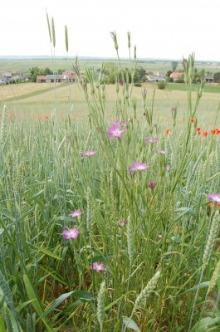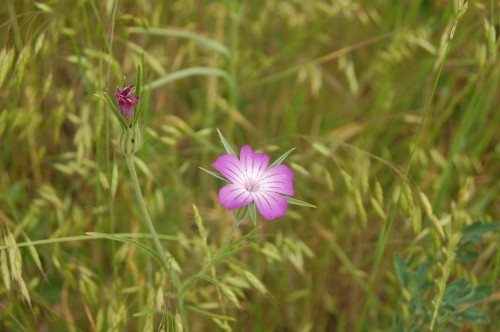Agrostemma githago L. Kąkol polny – Common Corn-cockle, Corncockle – An annual plant from the clove family. Formerly it was commonplace, now its occurance is rare. It has raised stem, reaching up to 90 cm in height. Stem and leaves are covered with long, white, soft hairs. Individual flowers grow only on the tops of the stems. The crown is made up of five free purple-lilac petals. It and is pollinated by butterflies and flowers from June to July. The fruit is a capsule containing large dark brown seeds. In soil and manure, the seeds lose their vitality quite quickly. Agrostemma githago occurs only in agricultural crops. It can be found nowhere in the natural environment. Its life cycle is perfectly adapted to the life cycle of cereals. He was particularly often found in winter rye. Currently, seed cleaning and effective methods of weed control are commonly used. As a result, corncockle can be found in crops less and less frequently. It is in danger of extinction. It’s seeds are poisonous; when flour is mixed with tchem it becomes bitter and poisonous. The plant is used to cure rash, eczema, as well as for cleaning minor wounds. The brew is prepared from 1 tablespoon of dried herb and 1 cup of boiling water (kept under cover for 15-20 minutes).
Curiostity: because the plant is slightly toxic, it can be treated only with the knowledge and consent of the doctor! After ingesting the seeds, there are symptoms of poisoning, nausea, headaches, heart rhythm disorders and even coma.










